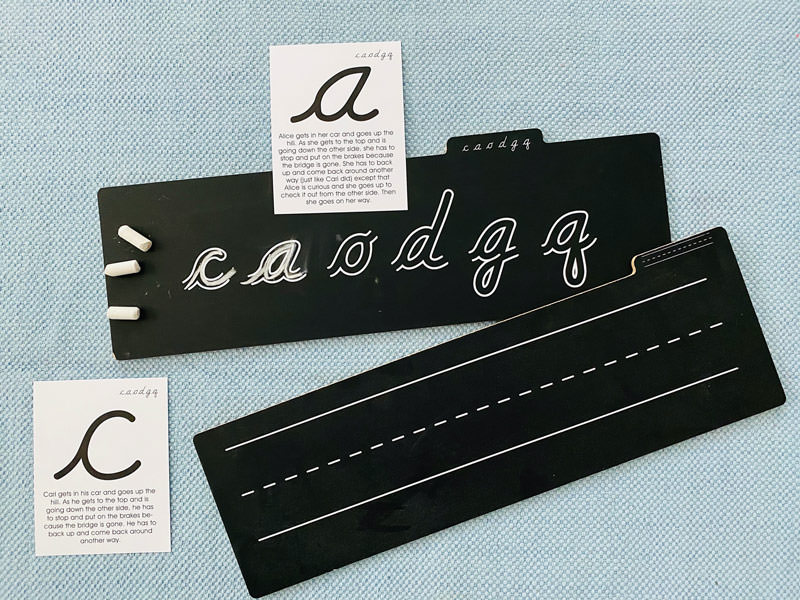Our Favorite Homeschool Resources
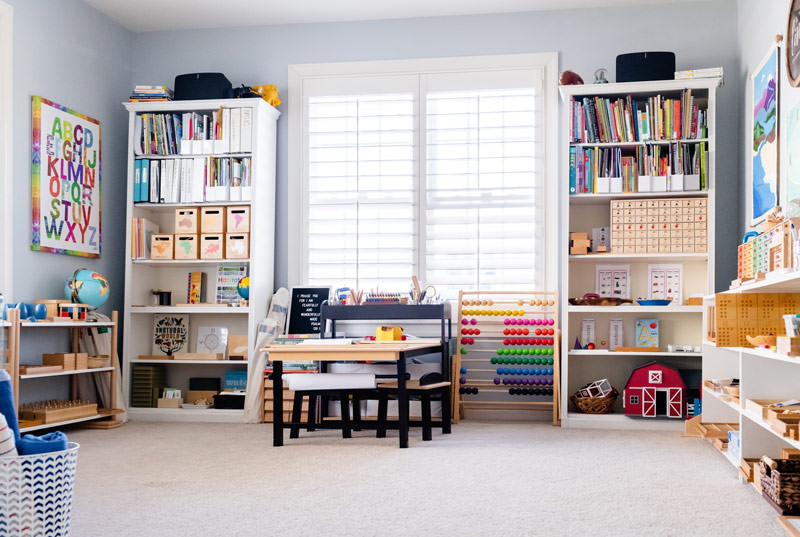
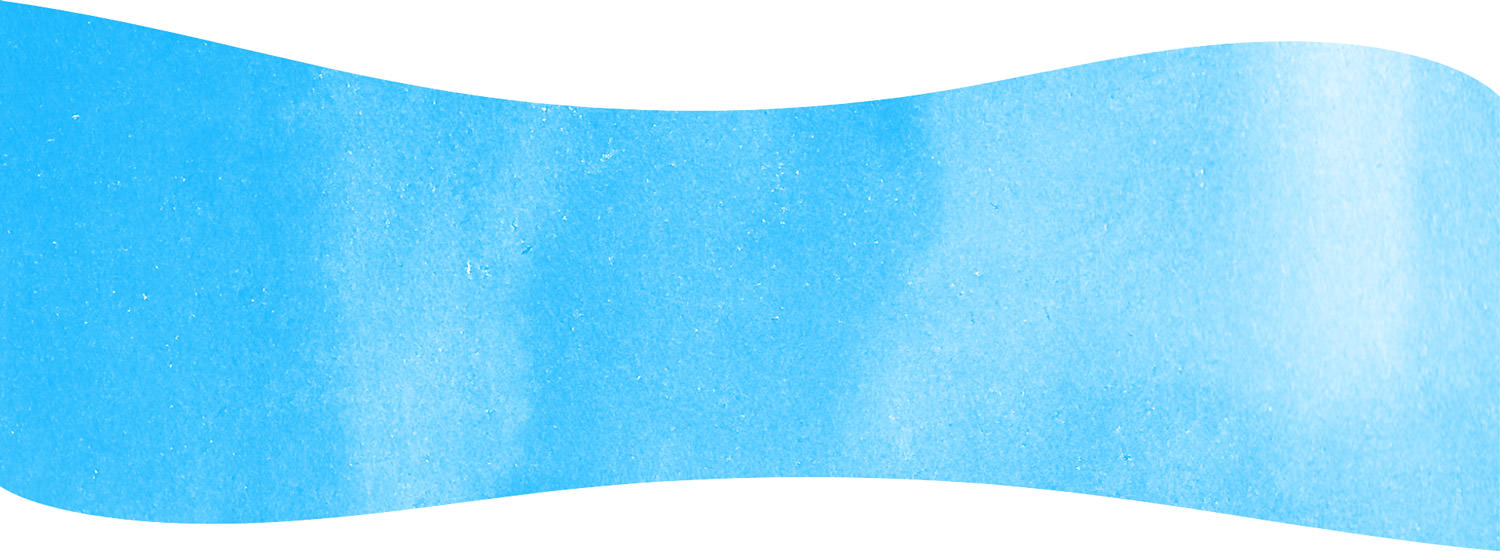
Montessori Albums and Language Studies
Here is a round-up of our favorite Montessori albums and resources for teaching reading and writing! My children and I have tried all of the materials on this list and we hope it helps you.
Montessori Albums as Curriculum
If you ask a Montessori homeschooler what curriculum they use they’ll usually refer to their favorite Montessori “album”. Albums are the equivalent of a teacher’s guide in Montessori education. They outline presentations (lessons) step-by-step and usually include a list of materials and the direct and indirect purpose of the lesson.
I also follow a scope and sequence which is a comprehensive outline of work, organized by subject, for the child to master during the school year. In our homeschool we use the scope and sequence from Montessori Compass which I like because it begins with lessons for toddlers, extends through sixth grade, and is extremely thorough.
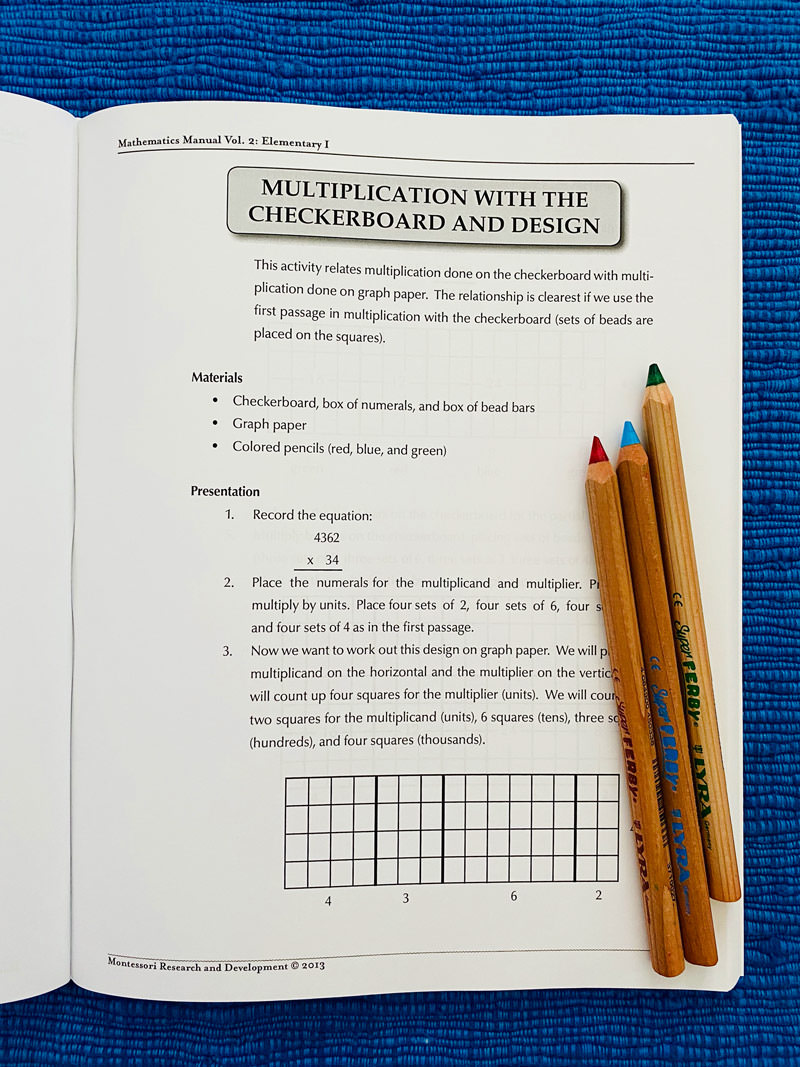
Following a Montessori album and scope and sequence helps me ensure my children are getting the most out of their Montessori education. I use these tools as my lesson plan and to track my children’s progress throughout the year.
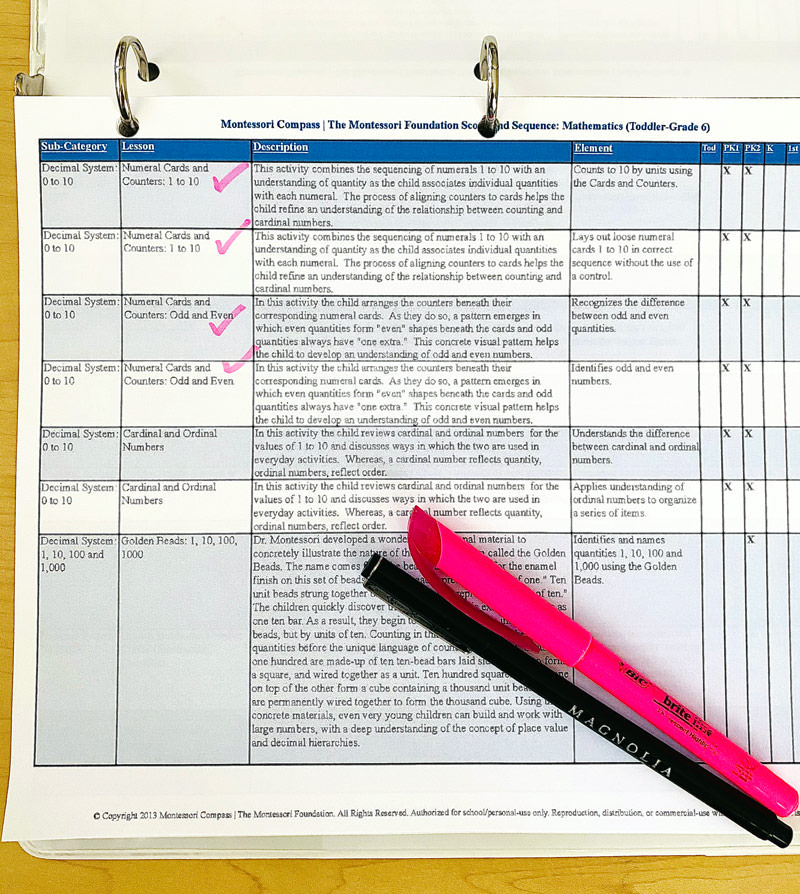
Albums I’ve Used
Montessori Research & Development - These albums offer detailed explanations and a materials list at the back of the book. You can purchase one volume at a time which is helpful because Montessori albums can be expensive. Albums range from infant to upper elementary.
North American Montessori Center (NAMC) - These albums are full color and beautifully done. They include helpful photographs and step-by-step instructions for each work. There is a homeschool version of this album, but I recommend using the classroom version because it is more extensive.
Keys of the World (ages 3-6 years) - This album is the shortest of all three album sets and the least expensive. However, the version I have has limited photos and some of the explanations are difficult to understand. I purchased this album a few years ago so an updated version may be available for purchase. The creator of this album offers online support, which I have never used, but it may be helpful for new Montessori homeschoolers.
Some of my favorite FREE resources for Montessori albums include the Montessori Primary guide at infomontessori.com and the Elementary math and geometry albums found at freemontessori.org/albums. I frequently cross-reference these albums with the ones I have from Montessori R&D and Keys of the World.
Helpful Tip
Whenever I run across a presentation that I don’t understand, which is usually a math presentations, I watch YouTube videos for clarification. My favorite source for video presentations is My Works Montessori because their explanations are clear and easy to understand.
Reading
When teaching my children how to read I paired the Montessori movable alphabet with the Montessori pink, blue, and green series and the Waseca Biomes reading program. The Montessori movable alphabet found here is a set of wooden letters that children use to make words and sentences. Consonants are red and vowels are blue to help young children distinguish between the two.

The Montessori pink, blue, and green series is a favorite resource of ours because it’s easy to use, interactive, and my children really like looking at the realistic photos. Different versions of the Montessori pink, blue, and green series are widely available online, but we enjoying using the FREE version found here.
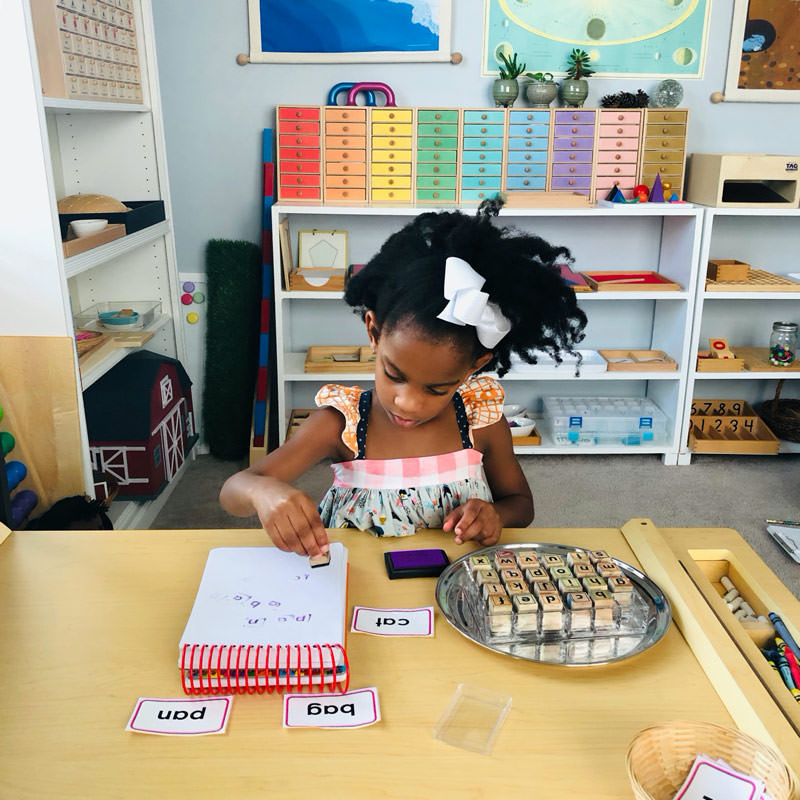
The Montessori pink, blue, and green series is a complete reading program and may be used on its own. However, in our home we pair it with the Waseca Biomes reading program which follows the Orton-Gillingham method, a more structured approach to teaching reading that isolates individual phonemes. This method is helpful for children with dyslexia and/or children who benefit from multi-sensory, explicit, and sequential lessons. The Waseca reading program found here includes cards and phonetic booklets for reading, handwriting, and spelling practice. It is designed to be paired with the Montessori movable alphabet which may be found here. Waseca Biomes also offers FREE booklets to accompany their reading program! The booklets found here under “Waseca Reading Program Booklets” include additional activities and handwriting pages. The Waseca program also includes extra printing practice in both print and cursive, a progress chart, and a guide to presentations.
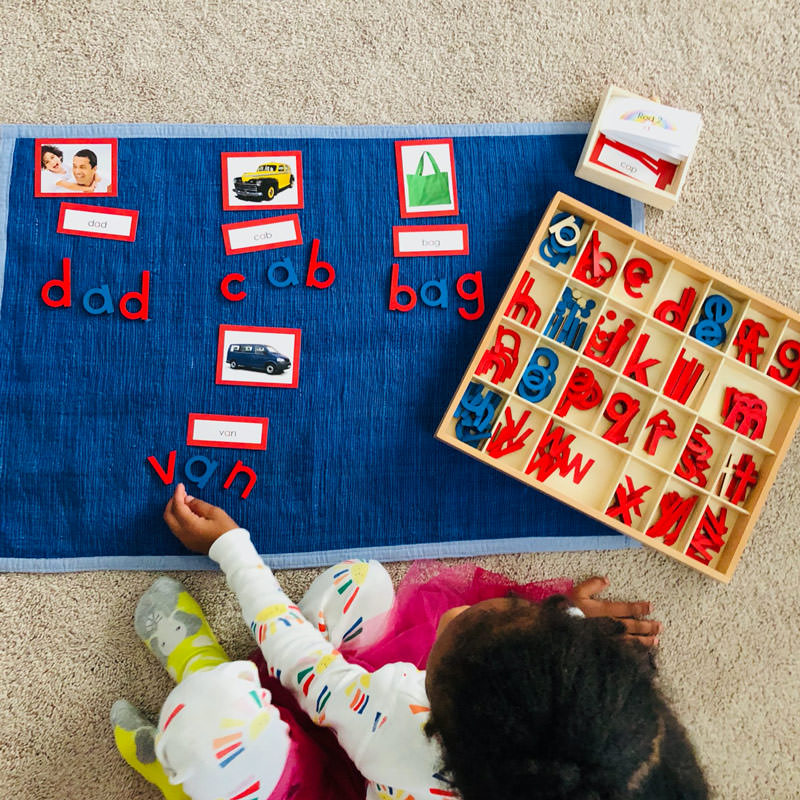
Early and Emergent Leveled Readers
When children are learning how to read it’s important for them to get into the habit of daily reading. We keep early readers on our kitchen table so they’re easily accessible and so my daughter and I remember to practice! She often reads while I’m cooking or after we’ve finished breakfast. Here’s a list of our favorite readers:
Bob Books — After my children have spent a couple of months making and reading words with our reading program, I introduce them to the very first book in the Bob books series. It’s fun to watch children progress from learning letter sounds and sounding out words to finally to reading their first book! Bob books are short, but they help children build the confidence they need to feel encouraged and to remain interested in learning. If your children don’t like the black and white sketches invite them to color the pages! They may feel more inclined to read the book if they’ve contributed to the illustrations found here.
The Good and the Beautiful readers — These readers are bright, colorful, and engaging. Sets A and B include mostly cvc words (consonant-vowel-consonant) and are geared toward children who are just learning how to read. Sets C and D include more blends, digraphs, and other phonetic elements. The readers may be found here.
Primary Phonics — While the Bob books and sets A and B of The Good and the Beautiful readers are short with few sentences, Primary Phonics readers are longer with longer sentences. They’re good for the beginning reader who has built up a bit of stamina and can handle longer reading sessions. These books found here come in eight sets of ten and offer a lot of reading practice and variety! When my son was learning how to read, I waited until he mastered one skill before introducing him to each set of Primary Phonics readers. For instance, I didn’t present him with set 1 until he was easily reading cvc words.
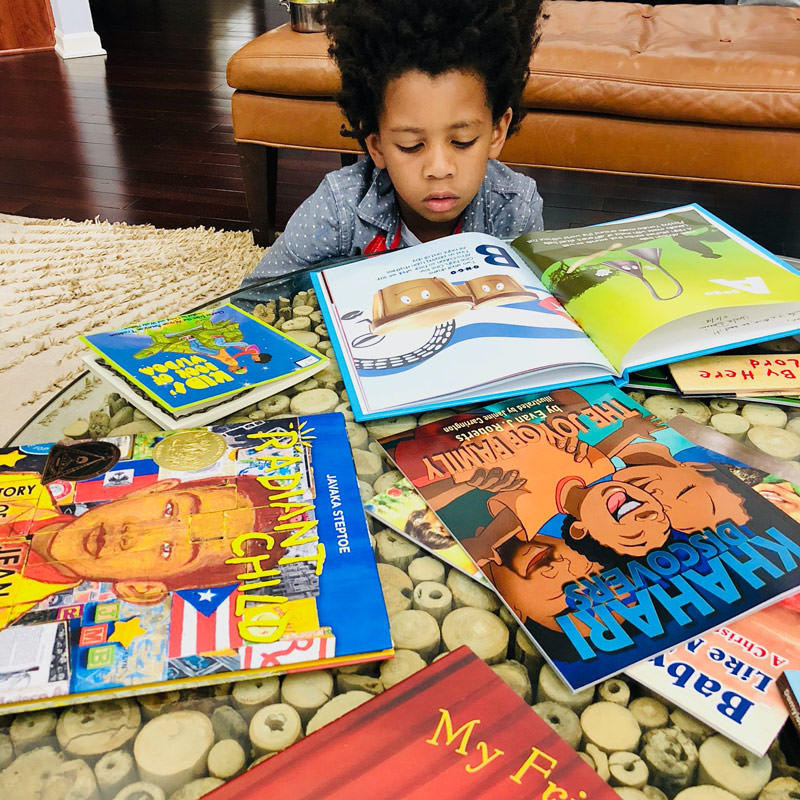
Handwriting
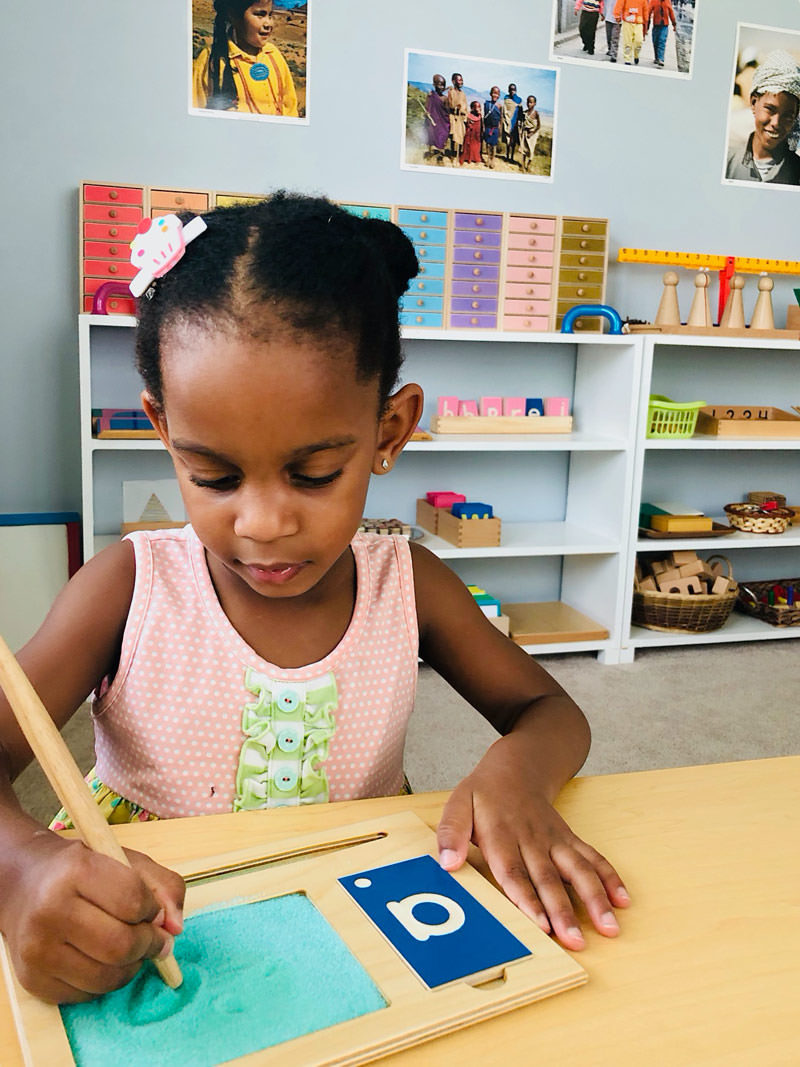
In Montessori education handwriting begins as a sensorial experience. Children as young as two years old use their fingers to draw lines and circles in the sand tray found here. They trace sandpaper letters or felt letters with their fingers while learning letter sounds. At four years old my daughter enjoys tracing letters on a wooden letter board using a stylus.
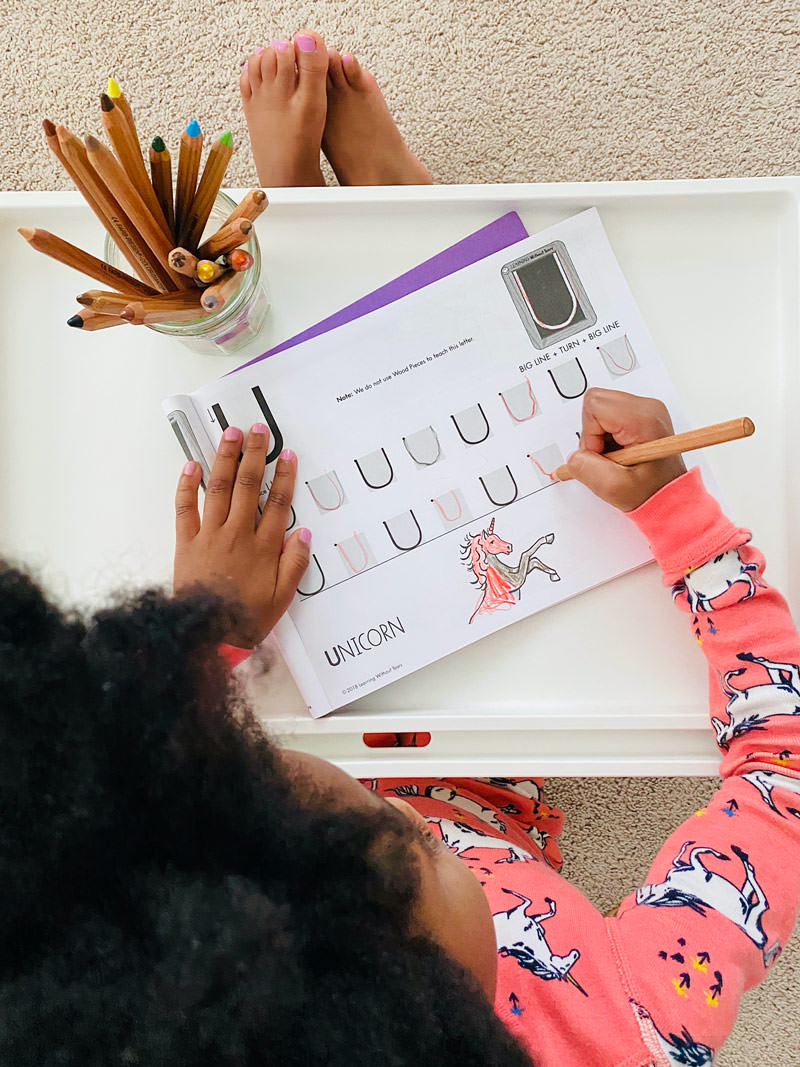
My children’s favorite way to practice writing letters is with the Wet-Dry-Try method, a handwriting technique coined by Learning Without Tears. Here’s how it works:
- A guide (teacher/adult/sibling) writes a letter using chalk on a small chalkboard;
- The child traces (and erases) the letter using a small, moist sponge — good for developing the pincer grip. (WET);
- The child traces the letter again, this time using a small bit of tissue (DRY);
- Finally, the child writes the letter using chalk. (TRY)
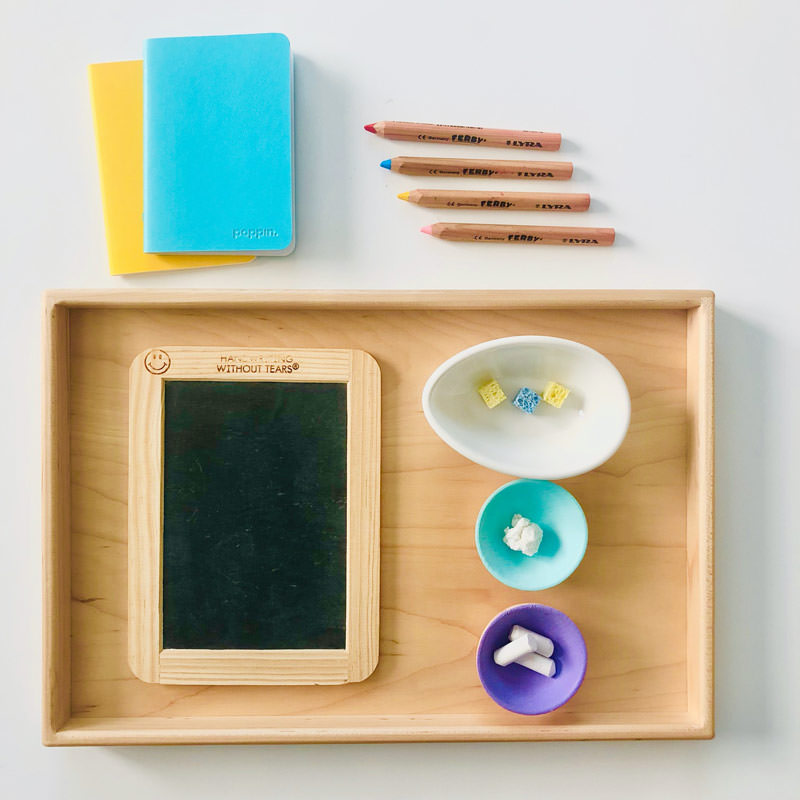
One of the most popular materials in our homeschool is the Montessori metal insets. These insets include a set of ten metal stencils which children use to trace shapes. They learn how to grip and guide the pencil and develop eye-hand coordination. It’s with this material that the young child begins learning how to write. My children enjoy using the insets and colored pencils to make designs using one or more shapes. The metal insets are nice to work with because they’re a bit heavier than expected and are fun to handle. I originally purchased a plastic set, but my son wasn’t nearly as intrigued by it as he is with the traditional metal set.
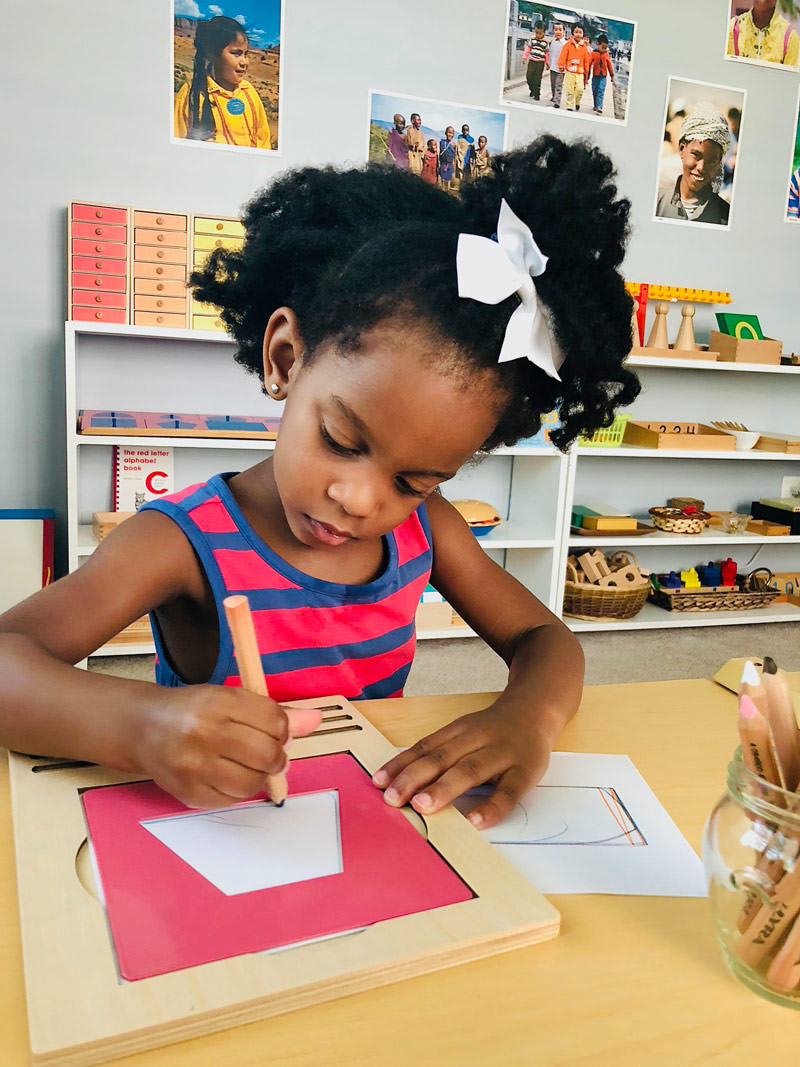
After my children have had extensive practice with the sand tray, wooden tracing board, the wet-dry-try method, and metal insets, I introduce them to handwriting practice books! My kids love the books by Learning Without Tears and so do I. The books include visual instructions for writing letters, tracing practice, and even coloring pages! My son started with the “My First School Book,” and progressed from there.
One thing I did differently from almost all Montessori programs is to teach my children print before cursive. When I started our Montessori journey my son was a toddler and I wasn’t aware of the benefits of learning cursive first. I thought he might be confused if he learned to write in cursive first, particularly since he learned to read before he could write! Recently, my son expressed an interest in learning cursive and has decided to teach himself this school year! He is excited to use our Waseca Biomes cursive boards and Learning Without Tears cursive handwriting books as a guide.
